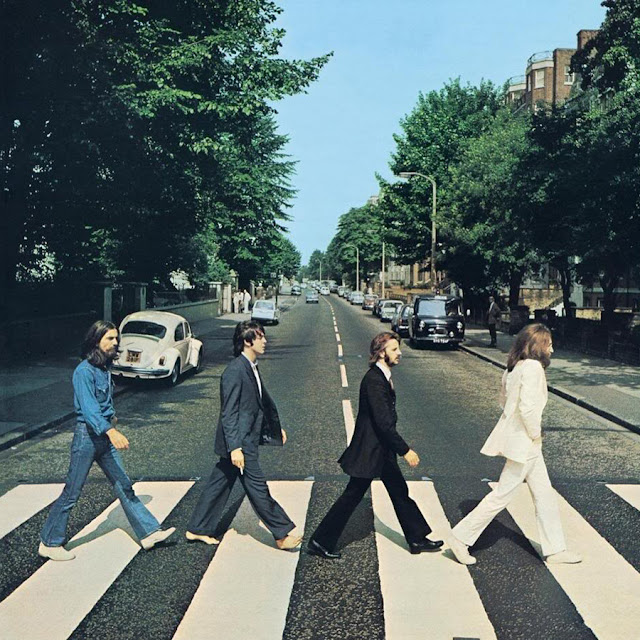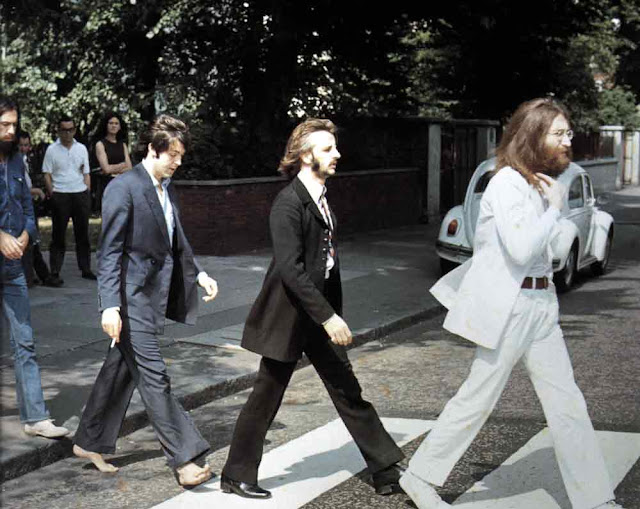Behind The Scenes of The Iconic Abbey Road Cover Photo shoot
Abbey Road is the 11th studio album released by the English rock band the Beatles. It is their last
recorded album, although Let It Be was the last album released before the band's dissolution in
1970. The album was released amid tensions within the band. Although it was a commercial
success, it received mixed reviews from music critics who found its music inauthentic and criticized
the production's artificial effects. Since its initial reception, the album has been viewed by many
critics as the Beatles' greatest work and is ranked by several publications as one of the greatest
albums of all time. Abbey Road remains their best-selling album.
success, it received mixed reviews from music critics who found its music inauthentic and criticized
the production's artificial effects. Since its initial reception, the album has been viewed by many
critics as the Beatles' greatest work and is ranked by several publications as one of the greatest
albums of all time. Abbey Road remains their best-selling album.
 |
| Abbey Road album artwork |
The front cover design, a photograph of the group traversing a zebra crossing, was based
on sketched ideas by McCartney.
photographer Iain Macmillan, who was a friend to John Lennon and Yoko Ono, was given only ten
minutes to take the photo whilst he stood on a step-ladder and a policeman held up the traffic. Using
a Hasselblad camera with a 50mm wide-angle lens, aperture f22, at 1/500 seconds, he took six
shots as the group walked across the zebra crossing just outside the studio.
The Beatles crossed the road a number of times while Macmillan photographed them. 8 August was
 |
| Abbey Road, taken on the morning of The Beatles' album cover shoot, 8 August 1969 |
The Beatles crossed the road a number of times while Macmillan photographed them. 8 August was
a hot day in north London, and for four of the six photographs McCartney walked barefoot; for the
other two he wore sandals. Shortly after the shoot, McCartney studied the transparencies and chose
the fifth one for the album cover.
After the road-crossing photo was finished, Iain Macmillan set off to find a good "Abbey Road" street
 |
| Picture one from the Abbey Road photography session |
 |
| Picture two from the Abbey Road photography session |
 |
| Picture three from the Abbey Road photography session |
 |
| Picture four from the Abbey Road photography session |
 |
| Picture six from the Abbey Road photography session |
After the road-crossing photo was finished, Iain Macmillan set off to find a good "Abbey Road" street
marker sign to use for the back cover of the album. He found it at the junction of Alexandra Road and
started taking photos of the sign. Much to his chagrin, while he was busy shooting an oblivious
woman in a blue dress walked right in front of his viewfinder. While reviewing his shots later that day,
however, he decided that the "blue dress" photo was the most interesting of the bunch, and he ended
up using it in the final composition.
The other photos that exist were taken by Linda McCartney. Here are some of the alternate out-take
The other photos that exist were taken by Linda McCartney. Here are some of the alternate out-take
photos taken that day before and during the photo shoot…
Here’s some photos of The Beatles sitting on the steps of EMI Abbey Road Studios waiting for the
Here’s some photos of The Beatles sitting on the steps of EMI Abbey Road Studios waiting for the
photo session to start...
Here’s a few more of the boys waiting to cross the street.
According to Wikipedia, in the scene, the group walk across the street in single file from left to right, with Lennon leading, followed by Starr, McCartney, and Harrison. McCartney is barefoot. With the exception
Here’s a few more of the boys waiting to cross the street.
 |
| This unseen photo below taken by Linda McCartney of Paul & Ringo from the Abbey Road photo sesssion was just released by Paul McCartney.com on May 10, 2012. |
According to Wikipedia, in the scene, the group walk across the street in single file from left to right, with Lennon leading, followed by Starr, McCartney, and Harrison. McCartney is barefoot. With the exception
of Harrison, the group are wearing suits designed by Tommy Nutter. To the left of the picture, parked
next to the zebra crossing, is a white Volkswagen Beetle motor-car which belonged to one of the people
living in the block of flats across from the recording studio. After the album was released, the number
plate (LMW 281F) was stolen repeatedly from the car. In 1986, the car was sold at auction for £2,530
and in 2001 was on display in a museum in Germany. The man standing on the pavement to the right
of the picture is Paul Cole (c. 1911 – 13 February 2008), an American tourist unaware he had been photographed until he saw the album cover months later.






.jpg)
.jpg)
.jpg)
.jpg)
.jpg)
.jpg)
.jpg)

No comments:
Post a Comment
Note: Only a member of this blog may post a comment.